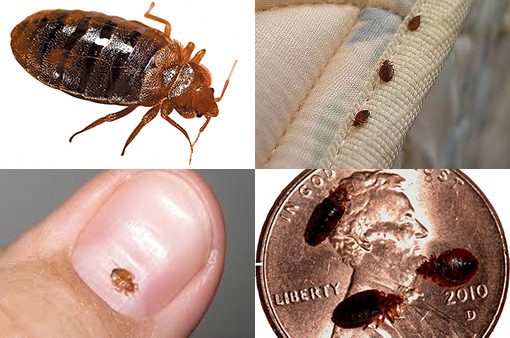Specialist A1 Bed Bug Exterminator in Houston - Effective Solutions
Specialist A1 Bed Bug Exterminator in Houston - Effective Solutions
Blog Article
Recognizing the Lifecycle of Pests for Targeted Control Strategies
Understanding the lifecycle of insects is a basic facet of effective bug management approaches. Through a much deeper understanding of how parasites prosper and develop, tailored control techniques can be designed to deal with certain points in their lifecycle, ultimately leading to even more successful parasite management end results.
Significance of Recognizing Parasite Lifecycle
Recognizing the lifecycle of pests is important for establishing reliable and targeted control methods in insect management. By understanding the various phases a bug goes via from egg to grownup, pest control specialists can identify weak spots in the lifecycle where treatment can be most successful. For example, understanding when larvae are most energetic can aid establish the ideal timing for using larvicides. Additionally, recognizing the lifespan of an insect species can aid in anticipating population growth patterns and prospective invasion risks.
Additionally, recognizing the details environmental problems essential for each and every phase of the parasite's lifecycle can assist decisions on habitat modification or exclusion methods to interfere with the lifecycle and minimize pest populaces. This understanding allows pest monitoring experts to apply proactive steps instead than counting only on responsive treatments, causing more lasting and lasting insect control remedies. Inevitably, a comprehensive understanding of insect lifecycles empowers bug control professionals to tailor their approaches properly, taking full advantage of and minimizing environmental impacts control results.
Trick Phases in Insect Development
To successfully apply targeted control techniques in insect administration, a critical element exists in thoroughly identifying and comprehending the key phases in pest advancement. Insect development usually includes a number of crucial stages that are crucial for their lifecycle and management. The initial stage is the egg stage, where insects lay eggs that later hatch out right into larvae. Larvae then proceed right into pupae, a phase where they undergo transformation prior to arising as grown-up pests. Comprehending these stages is vital as it aids in identifying at risk factors in the lifecycle where control actions can be most reliable.

Vulnerabilities in Insect Lifecycle
Throughout the various stages of a bug's lifecycle, distinct susceptabilities arise that can be strategically targeted for reliable control measures. One critical vulnerability exists in the egg phase, where insects are Visit This Link commonly extra at risk to specific insecticides or organic control agents due to their soft outer shell, making them easier targets for intervention. Furthermore, the nymph or larval phase provides vulnerabilities as parasites undertake quick growth and growth, requiring high power usage that can be manipulated by interrupting their food resources or introducing development inhibitors. Pupal phases, defined by immobility and transformation, provide a home window for targeted look at here control with physical barriers or certain treatments that impede successful development. Adult bugs, while extra resilient due to their reproductive capability, can still be vulnerable throughout breeding or egg-laying tasks, which can be interfered with with scent traps or sanitation techniques. Recognizing these vulnerabilities in the bug lifecycle is important for creating efficient and accurate control techniques that successfully take care of parasite populaces while lessening environmental influence.
Applying Targeted Control Measures

Applying targeted control actions commonly entails a multi-faceted approach. This may consist of habitat adjustment to make the environment less hospitable to parasites, such as eliminating standing water for insect control or securing entry factors for rats. In addition, biological control approaches can be utilized, where natural killers or virus are introduced to my blog keep insect populaces in check.
Integrated Insect Management (IPM) strategies that integrate different control actions in a collaborated and lasting way are frequently the most efficient in attaining long-term parasite administration goals. By executing targeted control procedures based on a comprehensive understanding of parasite lifecycles, pest populations can be effectively managed while lessening threats to human wellness and the environment.
Improved Parasite Administration Practices

Moreover, the unification of biological control representatives, such as natural killers or microorganisms of insects, can assist decrease dependence on chemical pesticides and advertise a much more balanced ecological community. Executing physical obstacles and traps can likewise be component of boosted insect monitoring methods, supplying safe and targeted remedies for parasite control. Additionally, making use of scents and other semiochemicals can disrupt pest breeding patterns and interaction, leading to decreased insect populaces gradually.
Final Thought
By determining key stages in parasite growth and susceptabilities in their lifecycle, targeted control actions can be executed to minimize insect populaces. Enhanced parasite monitoring methods can aid reduce the reliance on broad-spectrum chemicals and advertise more eco pleasant and sustainable pest control techniques.
Recognizing the lifecycle of insects is important for developing reliable and targeted control methods in insect administration. By understanding the different stages a pest goes through from egg to grownup, bug control specialists can determine prone points in the lifecycle where treatment can be most successful. Inevitably, an extensive understanding of pest lifecycles empowers insect control practitioners to customize their methods efficiently, taking full advantage of and minimizing environmental influences control results.
By applying targeted control procedures based on an extensive understanding of parasite lifecycles, bug populations can be effectively managed while lessening dangers to human health and wellness and the setting.
By determining essential phases in bug development and vulnerabilities in their lifecycle, targeted control measures can be applied to lessen bug populaces.
Report this page